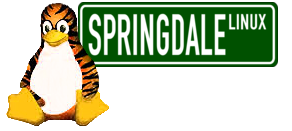Changes between Version 8 and Version 9 of FAQ
- Timestamp:
- Aug 3, 2010 11:44:37 AM (15 years ago)
Legend:
- Unmodified
- Added
- Removed
- Modified
-
FAQ
v8 v9 101 101 === How do I create boot media? === 102 102 103 There are currently three supported methods for installing PU _IAS Local 2103 There are currently three supported methods for installing PUIAS 104 104 105 105 CD-Rom (boot.iso) … … 109 109 Floppy booting is deprecated, instructions are included for previous releases. 110 110 111 cd-rom boot 111 ==== cd-rom boot ==== 112 112 Basic instructions for using cdrecord to burn boot.iso. 113 113 find your cd-rw drive first. 114 {{{ 114 115 root@pu_ias images# cdrecord -scanbus 115 116 ... 116 117 2,0,0 200) \'SONY \' \'DVD RW DRU-510A \' \'1.0b\' Removable CD-ROM 117 118 ... 119 }}} 118 120 119 121 burn the image 122 {{{ 120 123 root@pu_ias images# cdrecord -dev=2,0,0 -v boot.iso 121 124 ... … … 135 138 cdrecord: fifo had 52 puts and 52 gets. 136 139 cdrecord: fifo was 0 times empty and 0 times full, min fill was 100%. 137 140 }}} 138 141 139 142 Note: If you are using a cd-rw, blank the cd first 143 {{{ 140 144 root@pu_ias images# cdrecord -dev=2,0,0 -v blank=fast 141 145 ... … … 144 148 Blanking PMA, TOC, pregap 145 149 Blanking time: 28.321s 146 147 148 usb boot 150 }}} 151 152 ==== usb boot ==== 149 153 To use a usb flash drive as your boot device your bios needs to support usb booting. This is 150 154 sometimes called usb floppy drive booting, check your boot options in your bios setup (usually … … 156 160 157 161 Insert the drive and check your logs for messages: 162 {{{ 158 163 root@pu_ias images# dmesg | grep -A7 hub.c 159 164 hub.c: new USB device 00:1d.2-2, assigned address 2 … … 165 170 sdb: Write Protect is off 166 171 sdb: sdb1 167 172 }}} 168 173 You may have to load some modules to get your usb flash drive working, usb-storage for instance... 169 174 From the above we know that the usb drive is /dev/sdb, we can write out image to it. 175 {{{ 170 176 root@pu_ias images# dd if=diskboot.img of=/dev/sdb 171 177 12288+0 records in 172 178 12288+0 records out 173 179 }}} 174 180 Now you can boot your machine with the usb flash drive. If you wish to mount the vfat filesystem that 175 181 you created, mount the whole device, not sdb1 182 {{{ 176 183 root@pu_ias images# mount /dev/sdb /mnt/flash 177 184 root@pu_ias images# ls /mnt/flash 178 185 boot.msg initrd.img ldlinux.sys options.msg rescue.msg splash.lss vmlinuz 179 186 general.msg isolinux.bin memtest param.msg snake.msg syslinux.cfg 180 181 ===pxeboot== 187 }}} 188 189 ==== pxeboot ==== 182 190 Please see the question on configuring pxeboot... 183 floppy boot 191 192 ==== floppy boot ==== 184 193 Floppy boot is no longer supported, the following instructions apply to previous releases. 185 194 186 195 Assuming your using the first floppy drive in your system (does anyone have 2 drives anymore?) 187 196 format the disk first if it isn\'t formated already 197 198 {{{ 188 199 # fdformat /dev/fd0 189 200 Double-sided, 80 tracks, 18 sec/track. Total capacity 1440 kB. 190 201 Formatting ... done 191 202 Verifying ... done 203 }}} 192 204 193 205 next copy the boot image onto the floppy 206 {{{ 194 207 # dd if=boot.img of=/dev/fd0 bs=1440k 195 208 1+0 records in 196 209 1+0 records out 210 }}} 197 211 198 212 wait for the drive to finish and your prompt to return! patience, patience!
